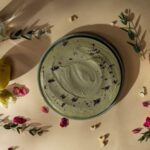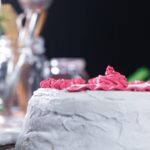Fresh flowers can add a touch of elegance and charm to any cake, making it a stunning centerpiece for special occasions. In this article, we will explore how to use fresh flowers for cake decorating, providing you with the knowledge and techniques necessary to create beautiful and eye-catching designs. Whether you are an experienced baker or just starting out, incorporating fresh flowers into your cake decorating repertoire can elevate your creations to a whole new level.
When it comes to using fresh flowers on cakes, it’s essential to choose the right types and varieties that are safe for consumption. We will discuss the different options available and how to prepare them properly for decorating purposes. Additionally, we will delve into the important considerations when it comes to ensuring the safety and edible nature of the flowers used on cakes.
From understanding the difference between edible and non-edible flowers to mastering techniques for placing them on cakes, this article covers everything you need to know about using fresh flowers for cake decorating. With our guidance, you’ll be able to create stunning flower cake designs that captivate and delight anyone who sees them. So let’s dive in and explore the beauty of incorporating fresh flowers into your cake decorating endeavors.
Choosing the Right Flowers
When it comes to using fresh flowers for cake decorating, it is important to select the right types and varieties that are safe for consumption. Not all flowers are suitable for use on cakes, as some may contain toxic substances or pesticides that can be harmful if ingested. When choosing flowers for cake decoration, it is essential to opt for varieties that are labeled as food-safe and free from harmful chemicals.
Edible flowers are the best choice for decorating cakes, as they are safe for consumption and add a delightful touch to your creations. Some popular edible flower options include roses, violets, pansies, lavender, and chamomile. These flowers not only bring vibrant colors and natural beauty to your cakes but also offer subtle flavors that complement the overall taste.
Before using fresh flowers for cake decorating, it is crucial to clean them thoroughly and remove any pollen or potential contaminants. This can be done by gently washing the flowers in cool water and allowing them to air dry on a paper towel. It is also advisable to cut off any stems or parts of the flower that may come into direct contact with the cake to ensure optimal food safety.
Understanding how to use fresh flowers for cake decorating involves knowing which types and varieties are safe to use, preparing them properly, and ensuring that they are free from harmful chemicals. By choosing edible flowers, cleaning them thoroughly, and removing any potential contaminants, you can create stunning flower cake designs that not only look beautiful but also taste delicious.
Preparing Fresh Flowers for Cake Decorating
When using fresh flowers for cake decorating, it is essential to properly prepare them to ensure they are safe for consumption and will enhance the overall presentation of the cake. One crucial step in preparing fresh flowers for cake decorating is cleaning and removing pollen.
Cleaning Fresh Flowers
Before using fresh flowers on a cake, it is important to gently clean them to remove any dirt, debris, or potential contaminants. This can be done by carefully washing the flowers under running water or gently wiping them with a damp cloth. It is important to handle the flowers delicately to avoid damaging them in the process.
Removing Pollen
Pollen can be an issue when using fresh flowers for cake decorating, as it may cause allergic reactions and can stain the cake. To remove pollen from flowers, carefully pluck the stamens or pollen-producing parts from the center of each flower. This will help prevent any potential issues with allergies and keep the cake looking pristine.
Inspecting for Pesticides and Chemicals
In addition to cleaning and removing pollen, it is essential to inspect the flowers for any signs of pesticides or chemicals that may have been used in their cultivation. Only use organic or pesticide-free flowers on cakes to ensure they are safe for consumption. If unsure about the source of the flowers, it is best to err on the side of caution and not use them for cake decorating.
By following these steps for preparing fresh flowers for cake decorating, you can ensure that your floral adornments not only look beautiful but are also safe for consumption. Taking the time to properly clean and prepare your fresh flowers will result in stunning cake designs that impress both visually and gastronomically.
Edible vs Non-Edible Flowers
When it comes to using fresh flowers for cake decorating, it’s important to understand the difference between edible and non-edible flowers. While both types can add beauty and elegance to your cake designs, there are some important considerations to keep in mind.
What Makes a Flower Edible?
Edible flowers are those that are safe for human consumption and are free from harmful chemicals or pesticides. Some common examples of edible flowers include roses, violets, pansies, and daisies. These flowers can be used to infuse flavor into desserts or simply as a decorative element on cakes. When selecting edible flowers for cake decorating, it’s crucial to ensure that they have been grown specifically for culinary use and have not been treated with any non-edible substances.
Non-Edible Flowers in Cake Decorating
Non-edible flowers, on the other hand, are not safe for consumption and should only be used as a decorative element on cakes. These flowers may include varieties such as lilies, daffodils, hydrangeas, and oleander.
While these flowers can add a stunning visual impact to your cake designs, they should never come into direct contact with the cake itself or any other food items. It’s important to use caution when using non-edible flowers for cake decorating, ensuring that they are securely placed on the cake with proper containment methods.
Understanding the difference between edible and non-edible flowers is essential for creating beautiful and safe cake designs. By selecting the right type of flower for your decorating needs and taking proper precautions, you can elevate your cakes with the natural beauty of fresh blooms without sacrificing safety or quality.
Techniques for Placing Fresh Flowers on Cakes
Fresh flowers can add a touch of natural beauty and elegance to any cake, but it’s important to know the proper techniques for placing them on cakes to ensure both aesthetics and safety. There are several different methods for incorporating fresh flowers into cake decorating, including wiring, picks, and direct application.
When using the wiring technique, floral wire is inserted into the stem of each flower to create a secure anchor that can be easily inserted into the cake without damaging the delicate blooms. This method provides stability and control over the placement of the flowers, allowing for more intricate and elaborate designs.
Another option is to use floral picks, which are small plastic or wooden sticks with a wire attached. The pick is inserted into the stem of the flower, providing a secure anchor that can then be easily placed into the cake. This method is convenient for creating cascading or vertical arrangements, as it allows for greater flexibility in positioning the flowers.
For those who prefer a simpler approach, fresh flowers can also be directly applied to the surface of the cake without any additional tools. However, it’s important to ensure that no part of the stem or flower directly touches the cake to avoid contamination. This method is best suited for single blooms or loose petals scattered across the cake for a more organic look.
No matter which technique you choose, it’s crucial to only use food-safe flowers that are free from harmful chemicals. It’s also recommended to consult with a professional florist or baker when using fresh flowers for cake decorating to ensure proper handling and placement.
Ultimately, mastering these techniques will allow you to create stunning floral arrangements on your cakes that will impress your guests and elevate your cake decorating skills to new heights.
Safety Considerations
When using fresh flowers for cake decorating, it is essential to ensure that the flowers are food-safe and free from harmful chemicals. Here are some important safety considerations to keep in mind when incorporating fresh flowers into your cake designs:
- Choose organic or pesticide-free flowers: When selecting flowers for cake decorating, it is crucial to choose varieties that have been grown organically or without the use of harmful pesticides. This will help ensure that the flowers are safe for consumption and free from potentially harmful chemical residues.
- Avoid toxic or poisonous flowers: Certain flowers are toxic and should never be used for cake decorating. It is important to research and familiarize yourself with the types of flowers that are safe to use and those that should be avoided at all costs.
- Check for allergies: Before using any fresh flowers on a cake, it’s important to consider potential allergies that you or your intended cake consumers may have. Some individuals may have allergies to certain types of flowers, so it’s crucial to take this into account when selecting blooms for your designs.
In addition to these safety considerations, it’s also important to properly clean and prepare the fresh flowers before using them on cakes. This includes removing any pollen and ensuring that the stems and petals are clean and free from dirt or debris.
Tips for Creating Stunning Flower Cake Designs
When it comes to using fresh flowers for cake decorating, creating stunning flower cake designs involves careful consideration of color combinations and arrangements. The right combination of colors and the way the flowers are arranged can make a cake truly stand out as a beautiful work of art. Here are some tips for creating stunning flower cake designs that will wow your guests:
- Consider the color scheme: When choosing fresh flowers for cake decorating, consider the overall color scheme of the cake. Look for flowers that complement or contrast with the frosting and other decorative elements on the cake.
- Balance the design: A good flower cake design has a balanced arrangement of flowers. Use different sizes, shapes, and types of flowers to create visual interest and balance on the cake.
- Think about focal points: Identify focal points on the cake where you want to place the most striking or eye-catching flowers. This could be at the top or center of the cake, or in specific areas where you want to draw attention.
When considering color combinations and arrangements for your flower cake designs, it’s important to keep in mind that less is more. Overcrowding the cake with too many different types and colors of flowers can create a cluttered look. Instead, focus on creating a cohesive and visually appealing design that enhances the overall aesthetic of the cake.
Remember to also take into account any particular themes or motifs for your event when choosing your color combinations and flower arrangements. By following these tips, you can create stunning flower cake designs that will leave a lasting impression on your guests.
Ultimately, using fresh flowers for decorating cakes adds a touch of natural beauty that no other decoration can replicate. With careful consideration of color combinations and arrangements, you can create visually breathtaking cakes that showcase the beauty of fresh flowers in all their glory.
Preserving Fresh Flowers on Cakes
When using fresh flowers for cake decorating, it’s important to ensure that the flowers remain fresh and beautiful throughout the event. There are several techniques you can use to preserve the freshness of the flowers on the cake.
One effective method is to refrigerate the cake until shortly before it needs to be displayed and served. This helps keep the flowers cool and prevents them from wilting. Additionally, you can lightly mist the flowers with water to keep them hydrated. It’s important to note that this method is best suited for certain types of flowers, so be sure to choose varieties that can handle refrigeration without wilting or becoming discolored.
Another way to preserve fresh flowers on cakes is by using floral sealants. These sealants are specifically designed to extend the life of cut flowers and can help protect them from wilting and browning. Be sure to choose a food-safe floral sealant, as this will ensure that it’s safe for consumption when placed on a cake.
Finally, if you’re working with particularly delicate or temperature-sensitive flowers, you may want to consider using flower picks or tubes filled with water. This allows you to insert the stems of the flowers into the pick or tube, keeping them hydrated while also protecting the cake from any moisture.
In summary, preserving fresh flowers on cakes requires careful planning and consideration of the specific needs of each flower variety. By refrigerating the cake, using floral sealants, and utilizing flower picks or tubes, you can ensure that your floral cake decorations remain fresh and beautiful for longer.
| Preservation Method | Effectiveness |
|---|---|
| Refrigeration | Keeps flowers cool and prevents wilting |
| Floral Sealants | Extends the life of cut flowers and protects from wilting |
| Flower Picks/Tubes with Water | Keeps delicate or temperature-sensitive flowers hydrated while protecting the cake from moisture |
Conclusion
In conclusion, incorporating fresh flowers into cake decorating can truly elevate the aesthetic of your creations. From adding a pop of color to bringing in a natural and organic element, there are endless possibilities for using fresh blooms to decorate cakes. By choosing the right types of flowers, preparing them properly, understanding safety considerations, and implementing various techniques for placement, you can create stunning and unique designs that will impress any audience.
It’s important to remember that when using fresh flowers for cake decorating, it is crucial to ensure that the flowers are food-safe and free from harmful chemicals. Additionally, understanding the difference between edible and non-edible flowers is essential for the safety of those consuming the cake. By following proper cleaning and preparation methods, as well as considering color combinations and arrangements, you can create visually appealing designs that are not only beautiful but also safe for consumption.
Incorporating fresh flowers into cake decorating adds a touch of elegance and sophistication to any dessert. Whether you choose to wire the flowers, use picks, or apply them directly onto the cake, there are endless opportunities for creativity.
With the right knowledge and techniques, you can confidently use fresh flowers to adorn your cakes and create stunning masterpieces that will leave a lasting impression on everyone who sees them. So go ahead and experiment with different types of blooms, colors, and arrangements to inspire your cake decorating with the beauty of fresh flowers.
Frequently Asked Questions
Can I Use Fresh Flowers to Decorate a Cake?
Using fresh flowers to decorate a cake can be a beautiful and elegant way to add a natural touch to your dessert. However, it is crucial to ensure that the flowers are safe for consumption and have not been treated with pesticides or other harmful chemicals.
How Far in Advance Can I Decorate a Cake With Fresh Flowers?
The timing of when you can decorate a cake with fresh flowers depends on the type of flower and how you plan to use them. Generally, it is best to decorate the cake with fresh flowers shortly before serving to ensure they look their best.
Some hardy flowers may last longer, but it’s essential to consider their freshness and appearance.
How Do You Seal Fresh Flowers for a Cake?
When using fresh flowers on a cake, it is important to seal them properly to prevent any contact between the flowers and the cake. One method is to wrap the stems of the flowers with floral tape or cover them with food-safe materials such as parchment paper or plastic wrap before placing them on the cake.
This extra layer helps ensure that the flowers do not come into direct contact with the cake surface, maintaining both safety and freshness.

Welcome to my blog about home and family. This blog is a place where I will share my thoughts, ideas, and experiences related to these important topics. I am a stay-at-home mom with two young children. I hope you enjoy reading it! and may find some helpful tips and ideas that will make your home and family life even better!





